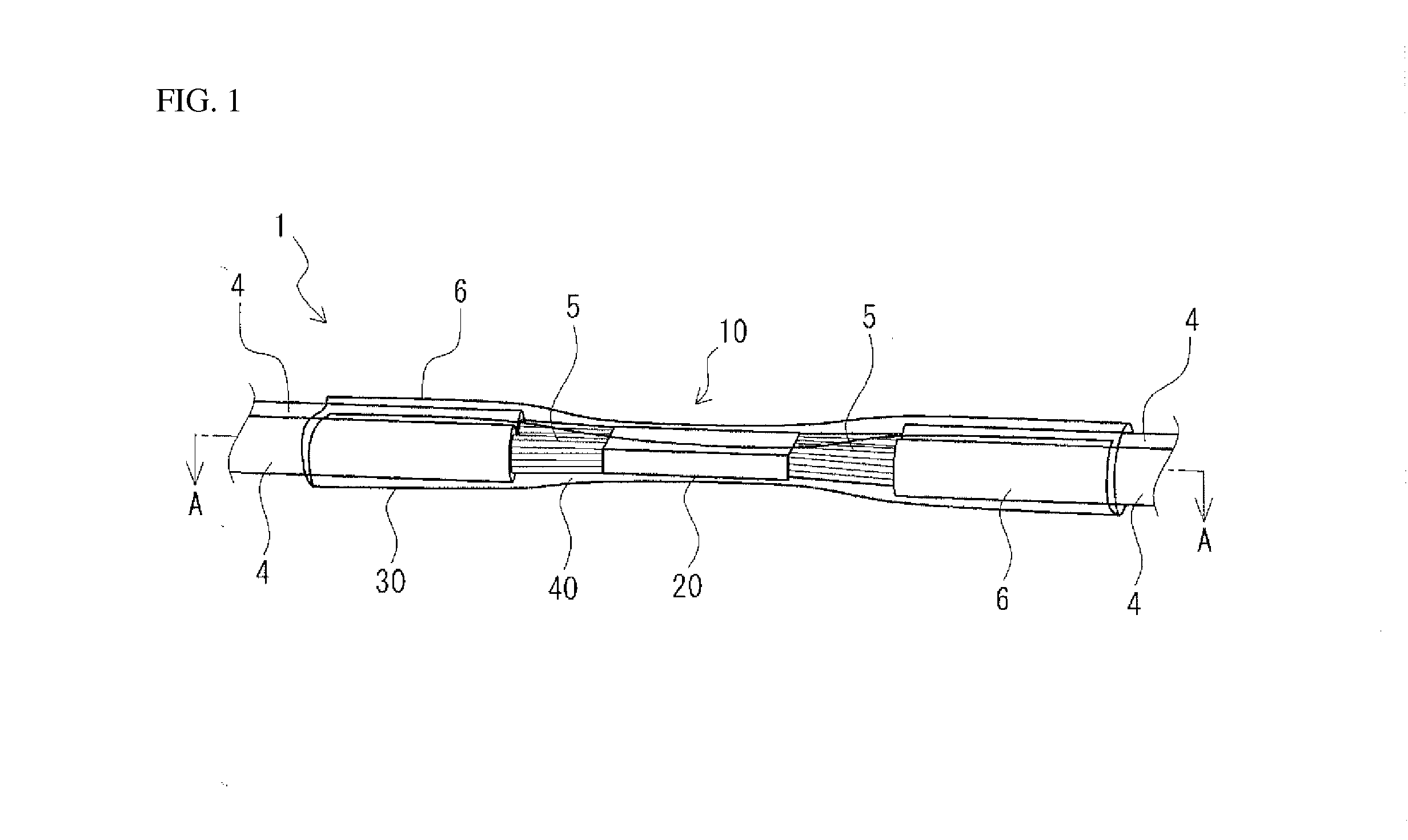Curing material, wire harness, and manufacturing method thereof
a technology of wire harnesses and curing materials, applied in the direction of insulating conductors/cables, cables, insulated conductors, etc., can solve the problems of plasticizer migration, detachment, and reduction of adhesive strength, and achieve good waterproofing, short period of time, and favorable properties
- Summary
- Abstract
- Description
- Claims
- Application Information
AI Technical Summary
Benefits of technology
Problems solved by technology
Method used
Image
Examples
synthesis example 1
Synthesis of UP-1
[0117]Into a reaction vessel equipped with a stirrer, 80 g (200 mmol) of polypropylene glycol with a number-average mean molecular weight of 400, 40 g (238 mmol) of hexamethylene diisocyanate, and 0.05 g of dibutyltin dilaurate were poured, and the liquid temperature was increased from room temperature to 50° C. over one hour, under stirring. Subsequently, a small portion was sampled, and stirring was continued at 50° C., while the absorption of the isocyanate group near 2300 cm−1 was being examined by FT-IR measurement. The amount of the residual isocyanate group contained was calculated from the absorption area of FT-IR, and the point in time at which the content was reduced to about 15% of the content before the reaction and ceased to change was regarded as the completion of the reaction, and a colorless transparent viscous liquid was obtained. Additionally, 9.84 g (84.8 mmol) of 2-hydroxyethyl acrylate, 0.05 g of dibutyltin dilaurate, and 0.02 g of pentaerythrit...
synthesis example 2
Synthesis of UP-2
[0118]Into a reaction vessel equipped with a stirrer, 35 g (200 mmol) of 1,10 decanediol with a molecular weight of 174.28, 40 g (238 mmol) of hexamethylene diisocyanate, and 0.05 g of dibutyltin dilaurate were poured, and the liquid temperature was increased from room temperature to 80° C. over one hour, under stirring. Subsequently, a small portion was sampled, and stirring was continued at 80° C., while the absorption of the isocyanate group near 2300 cm−1 was being examined by FT-IR measurement. The amount of the residual isocyanate group contained was calculated from the absorption area of FT-IR, and the point in time at which the content was reduced to about 15% of the content before the reaction and ceased to change was regarded as the completion of the reaction, and a colorless transparent viscous liquid was obtained. Additionally, 9.84 g (84.8 mmol) of 2-hydroxyethyl acrylate, 0.05 g of dibutyltin dilaurate, and 0.02 g of pentaerythritol tetrakis[3-(3,5-di-...
PUM
| Property | Measurement | Unit |
|---|---|---|
| Area | aaaaa | aaaaa |
| Solubility parameter | aaaaa | aaaaa |
Abstract
Description
Claims
Application Information
 Login to View More
Login to View More - R&D
- Intellectual Property
- Life Sciences
- Materials
- Tech Scout
- Unparalleled Data Quality
- Higher Quality Content
- 60% Fewer Hallucinations
Browse by: Latest US Patents, China's latest patents, Technical Efficacy Thesaurus, Application Domain, Technology Topic, Popular Technical Reports.
© 2025 PatSnap. All rights reserved.Legal|Privacy policy|Modern Slavery Act Transparency Statement|Sitemap|About US| Contact US: help@patsnap.com



